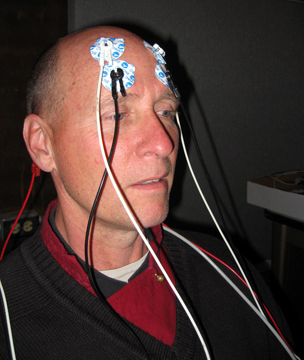The GWV Research Project into Meditation and the Religious Experience
The GWV has been engaged in meditation research from its inception. The founder of the GWV has been engaged in the study and practice of meditation for over 3 decades. In 2003 he began to host a series of Yahoo groups where a peer group of meditators with extensive experience with meditation and meditative absorption developed. It is these peer groups on Yahoo Groups that became our resource for case histories.
Jhana Support Group
Kundaliniheat
In the course of leading those Yahoo groups it became important to research the history of meditation and meditative absorption through studying key literature on the subject. Through that literature search we found that there are ancient references to meditative absorption in the Discourses of the Buddha, Patanjali's Yoga Sutras and the writing of Teresa of Avila and John of the Cross, as well as the writing of other mystics. These discourses were extracted from the literature, checked for translator error and wherever necessary corrected.
In the course of conducting our multicultural research on the literature of meditative absorption we found that even though western researchers have been engaged in the study of meditation, there seems to be a profound lack of relevancy to the advanced meditator in that research. Most western research on meditation is engaged in studying the effect of meditation upon the neurophysiology of the new practitioner. While we feel this is fruitful work, we do not find this work addresses the issues of the long-term meditator.
We have sent letters to many of the western researchers who are studying meditation, such as the faculty of the Mind and Life Institute and the Shamatha Project, telling them of the needs of the advanced meditator, and the value of the historic references for meditative absorption; however; they have ignored our letters. Additionally, western research has consistently avoided the all-important historical research in the literature on the subject of meditation and meditative absorption. Thus, we believe western researches have simply not done their homework on the subject of meditation and meditative absorption, which is to first and foremost to conduct a literature search in one's subject area before attempting to conduct any new research. While western researchers may have studied what other researchers have done, they have not simply studied the history of gnosis, to understand it, whereas we of the GWV have not only studied the history of gnosis, but we have engaged in the practice of meditaiton to produce gnosis, and we have successfully found gnosis.
The next phase in the GWV's research into meditation and meditative absorption is to acquire personal case histories with meditation and meditative absorption. We are in fact currently collecting those case histories through an on-line Questionnaire form.
Peer review is another important aspect of research, so we have started a Yahoo Group called meditation_research that is in dialog on research into meditation and meditative absorption. There we have over 300 members. Our mission there is to review research and to dialog about honing our research method.
We believe the primary problem with research into meditative absorption today has been not having the subjects as active participants in the research design. Thus, our goal is to conduct our own research, which is directed by contemplatives who have a great deal of experience with meditative absorption.
One of our goals is to take the "lab" to the subject so that the subject can meditate in their familiar surroundings so that we researchers are not disrupting their very important set and setting, which is often times needed for a successful entry into meditative absorption. This means we will need to acquire our own equipment, or gain access to someone else's equipment.
We recognize that EEG and fMRI are becoming standards in clinical testing of meditators, however, we are interested in considering other tests as well, which may necessitate acquiring other kinds of equipment, such as EKG and something to measure respiration as well as muscle tone, if there are such devices.
We plan to identify a number of subjects through the questionnaires, reviewing their case history and personal interviews by email and telephone. Once we have selected a group of about 100 subjects, we then plan to purchase an EEG machine, and send it to our subjects with a properly trained technician to opporate it. These subjects live all over the country. This means our research lab will have to be mobile. Once each subject has been tested and the results are reviewed, then if the data warrants it, we will send our subject to a nearby imaging center to acquire an fMRI image of their brain.
Thus in three years the GWV has conducted a considerable amount of research in meditation that goes far beyond the present level in western research on meditation and meditative absorption. We believe GWV Research is now ready for the next phase in its three-year research program, which is to actually conducting our own neuro-imaging of a selected group of advanced meditation practitioners. However, we need funding to support that research. If you are interested in supporting the GWV's research into meditative absorption (jhana/samadhi) then please make a contribution today.

